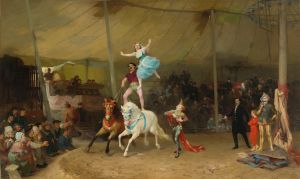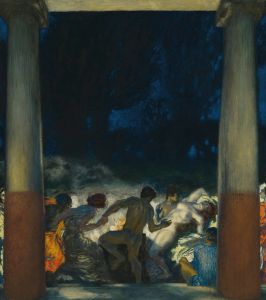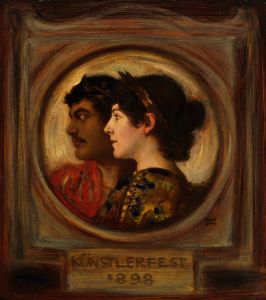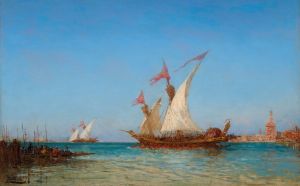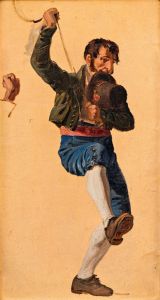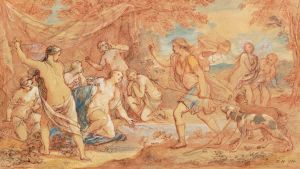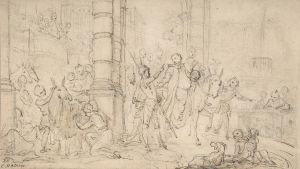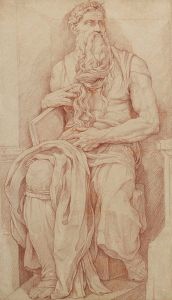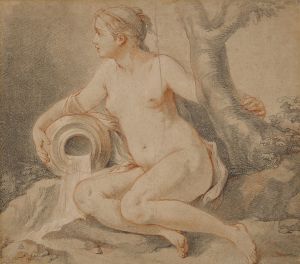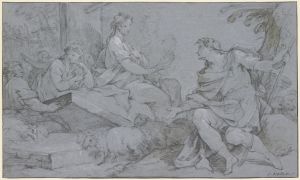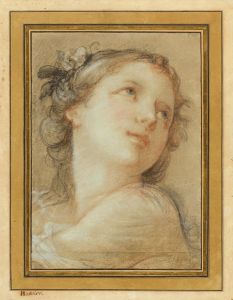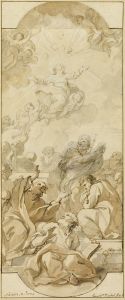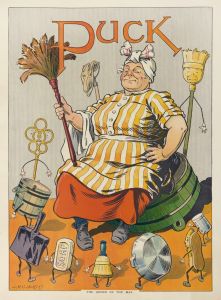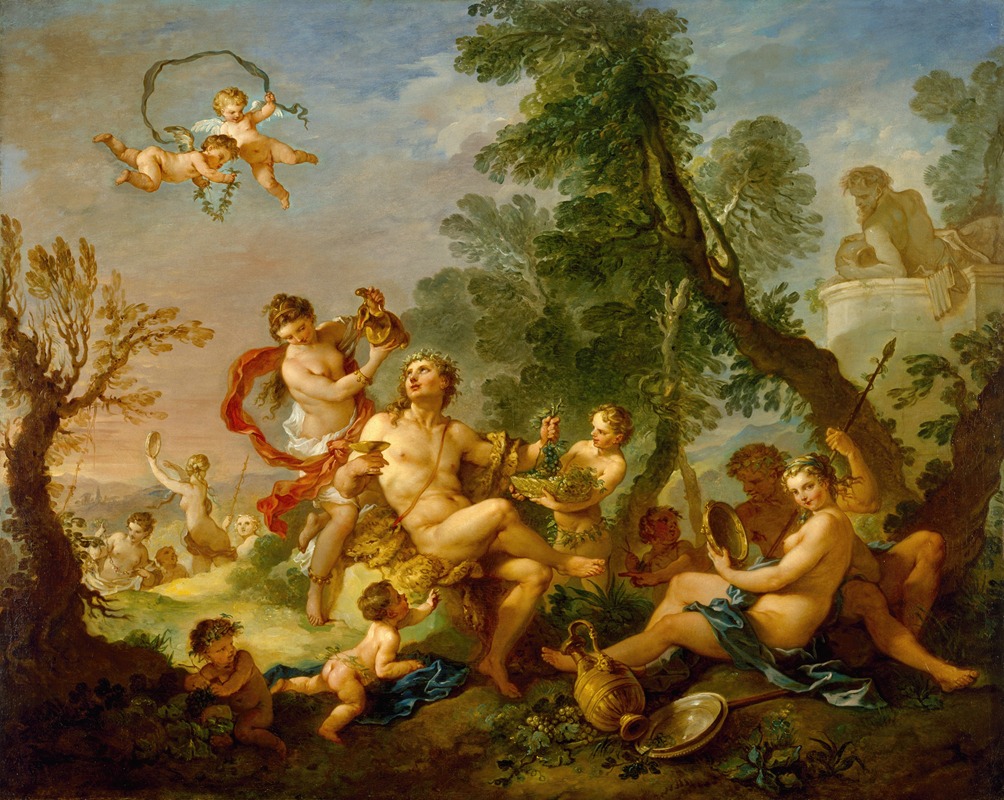
Bacchanal
A hand-painted replica of Charles-Joseph Natoire’s masterpiece Bacchanal, meticulously crafted by professional artists to capture the true essence of the original. Each piece is created with museum-quality canvas and rare mineral pigments, carefully painted by experienced artists with delicate brushstrokes and rich, layered colors to perfectly recreate the texture of the original artwork. Unlike machine-printed reproductions, this hand-painted version brings the painting to life, infused with the artist’s emotions and skill in every stroke. Whether for personal collection or home decoration, it instantly elevates the artistic atmosphere of any space.
Charles-Joseph Natoire's "Bacchanal" is a notable example of 18th-century French Rococo painting, a style characterized by its ornate detail, lightness, and emphasis on themes of love and nature. Natoire, born in 1700 in Nîmes, France, was a prominent artist of his time, known for his mastery in both painting and tapestry design. He trained under the influential Rococo painter François Lemoyne and later became the director of the French Academy in Rome, a position that underscored his significance in the art world.
"Bacchanal" is a depiction of a scene inspired by the Bacchanalia, ancient Roman festivals of Bacchus, the god of wine, freedom, intoxication, and ecstasy. These festivals were known for their uninhibited and ecstatic celebrations, which often included music, dance, and revelry. Natoire's painting captures the spirit of these festivities through its dynamic composition and lively figures.
The painting showcases a group of figures engaged in a joyous celebration, likely set in a pastoral landscape, a common setting for Rococo works. The figures, often depicted in various states of undress, are engaged in dancing, playing musical instruments, and partaking in the pleasures of wine. Natoire's use of soft, pastel colors and fluid brushwork enhances the sense of movement and merriment, drawing the viewer into the scene.
Natoire's "Bacchanal" reflects the Rococo era's fascination with classical mythology and its penchant for depicting scenes of leisure and pleasure. The painting's composition is carefully balanced, with a harmonious arrangement of figures and a gentle interplay of light and shadow, typical of the Rococo style. The figures are elegantly posed, their expressions conveying a sense of joy and abandon, which is central to the theme of Bacchanalian revelry.
As a historical piece, "Bacchanal" offers insight into the cultural and artistic values of 18th-century France. The Rococo period, which flourished during the reign of Louis XV, was marked by a shift away from the grandeur and formality of the Baroque towards a more playful and intimate aesthetic. Natoire's work embodies this transition, emphasizing themes of nature, sensuality, and the ephemeral pleasures of life.
Charles-Joseph Natoire's contribution to the Rococo movement is significant, and "Bacchanal" stands as a testament to his skill and artistic vision. The painting not only exemplifies the stylistic elements of the period but also serves as a cultural artifact that reflects the social and artistic milieu of its time. Through "Bacchanal," Natoire invites viewers to partake in the joyous celebration of life, capturing the essence of a bygone era with elegance and charm.





